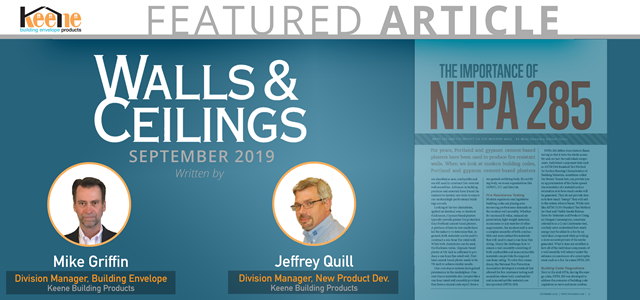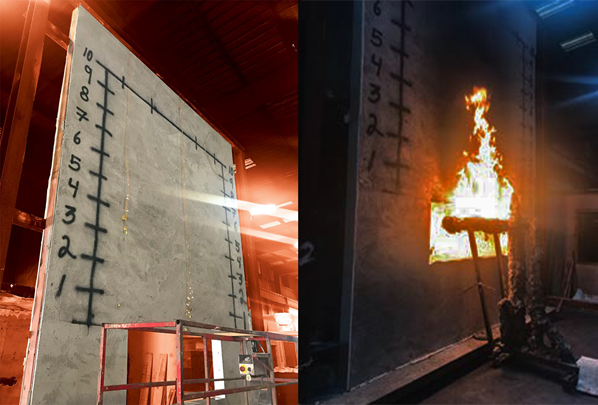
NFPA 285 is a 30-minute test designed to simulate what happens when an interior fire flashes over and starts burning the exterior of a structure.

Fire Resistance Testing
"Modern regulatory and legislative building codes are placing ever-increasing performance demands on the modern wall assembly. Whether for increased R-value, reduced air penetration, light-weight materials, rainscreens or any number of other requirements, the modern wall is now a complex assembly of both combustible and noncombustible materials that still need to meet a one-hour fire rating. Hence the challenge: how to ensure a wall assembly consisting of both combustible and noncombustible materials can provide the required one-hour rating. To solve this conundrum, the National Fire Protection Association developed a standard that allowed for fire resistance testing wall assemblies where both combustible and noncombustible materials are incorporated (NFPA 285).
NFPA 285 differs from historic flame testing in that it tests the whole assembly and not just the individual components. Individual component tests such as ASTM E84 Standard Test Method for Surface Burning Characteristics of Building Materials, sometimes called the Steiner Tunnel test, can provide you an approximation of the flame spread characteristics of a material and an estimation as to how much smoke will be generated. They do not provide data as to how much “energy” they will add to the system when it burns. Tests like ASTM E1354 Standard Test Method for Heat and Visible Smoke Release Rates for Materials and Products Using an Oxygen Consumption, sometime referred to as a Cone Calorimeter test, can help users understand how much energy may be added to a fire by an individual component while providing a more accurate picture of the smoke generated. What it does not establish is how all of the individual components of a wall assembly will interact under the extreme circumstances of a catastrophic event such as a fire. In comes NFPA 285.
Understanding NFPA 285
Born in the mid-1970s, during the energy crisis, NFPA 285 was developed to address the concerns of building code regulators as more and more combustible insulation was being included in wall assemblies. NFPA 285 provides a tool to evaluate the whole wall assembly and still the fears of fire inspectors and regulatory bodies.
Today, NFPA 285 has had a profound impact on the construction industry. It can be found referenced in numerous places in the building code and regulation. With one-coat stucco, any time it is used in a structure over 40 feet or when it is used as cladding on a structure with continuous insulation regardless of height, the wall assembly must have passed NFPA 285.
To read the full article from Walls & Ceilings, please click here.